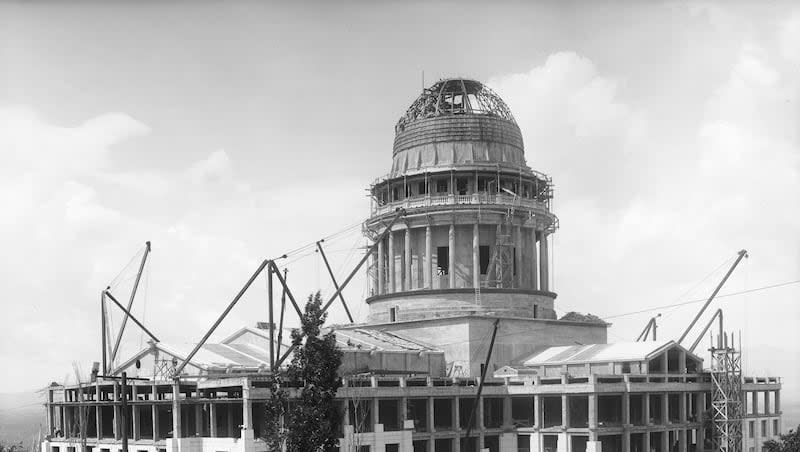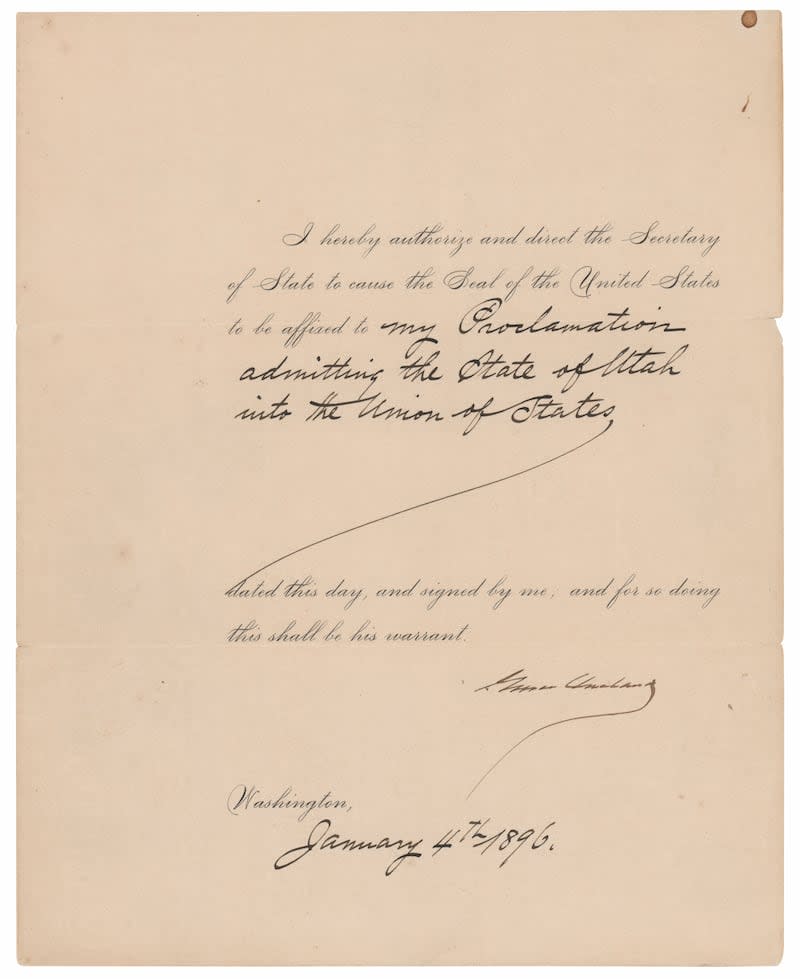The document that made Utah a state fetched $27K at auction

- Oops!Something went wrong.Please try again later.
- Oops!Something went wrong.Please try again later.
A document signed by President Grover Cleveland that approved Utah’s entry into the Union sold at auction for $27,188.
The handwritten letter was sold by RR Auction alongside a typed letter from Robert Oppenheimer, a document for the Potomac Company signed by George Washington and a letter signed by Charles Darwin about the “new English edition of ‘The Origin.’”
The auction started on March 25 and concluded Wednesday.
Cleveland officially proclaimed Utah a state on Jan. 4, 1896, but the territory unsuccessfully applied for statehood six times before acceptance.
“Utah’s path to statehood was fraught with obstacles, each overcome with remarkable perseverance,” Bobby Livingston, executive vice president at RR Auction, said in a release. “This signed document is not just a piece of history; it’s a symbol of Utah’s relentless spirit and commitment to achieving statehood.”
Before the arrival of Latter-day Saint pioneers, five Native groups — the Goshute, Paiute, Shoshone, Navajo and Ute — lived in the area. Today, Utah is home to eight tribal nations whose heritage is connected to those five communities and across the West.
Latter-day Saint pioneers trekked westward to flee religious persecution and by July 22, 1847, the first company of pioneers entered the Salt Lake Valley. One year later, the Treaty of Guadalupe Hidalgo was signed and ended the Mexican-American War. Subsequently, Mexico ceded the area of Utah to the U.S.
As part of the Compromise of 1850, Sen. Henry Clay introduced a bill that would establish Utah as a territory. Congress did so on Sept. 9, 1850, and so the Utah Territory was formed.
U.S. President Millard Fillmore named Brigham Young, the president of The Church of Jesus Christ of Latter-day Saints, the governor of Utah Territory and, soon after, the territory began submitting applications for statehood.
Six applications and almost five decades later, Utah Territory became the State of Utah.
In the meantime, Utah Territory became a pioneer in the women’s suffrage movement. Seraph Young, a schoolteacher, cast her ballot in a municipal election on Feb. 14, 1870, making her the first woman in America to vote. Though Wyoming enfranchised women in 1869, they would not have an opportunity to vote until September 1870.

Before becoming a state, Utah Territory had moved its capital. Fillmore in central Utah was the original territorial capital, but by 1856, Salt Lake City was established as the territorial capital. Today, it is still the state capital.
The transcontinental railroad was completed on May 10, 1869, uniting the East and the West coasts in Promontory, Utah, when the final spike was driven into the ground.
Latter-day Saints spent 40 years building the Salt Lake Temple, which was dedicated on April 6, 1893. It was a monumental construction experience and Elder J. Golden Kimball, a Latter-day Saint general authority who served from 1892 to 1938, would later remark, “When I think about that building, every stone in it is a sermon to me.”
All of this and more happened before Utah successfully became a state.
Delegates drafted a state constitution in 1895, which was ratified on Nov. 5, 1895. By Jan. 4, 1896, Utah Territory became the State of Utah.
The Utah Constitution still is the state’s guiding document when it comes to governance. Its preamble reads, “Grateful to Almighty God for life and liberty, we, the people of Utah, in order to secure and perpetuate the principles of free government, do ordain and establish this Constitution.”

